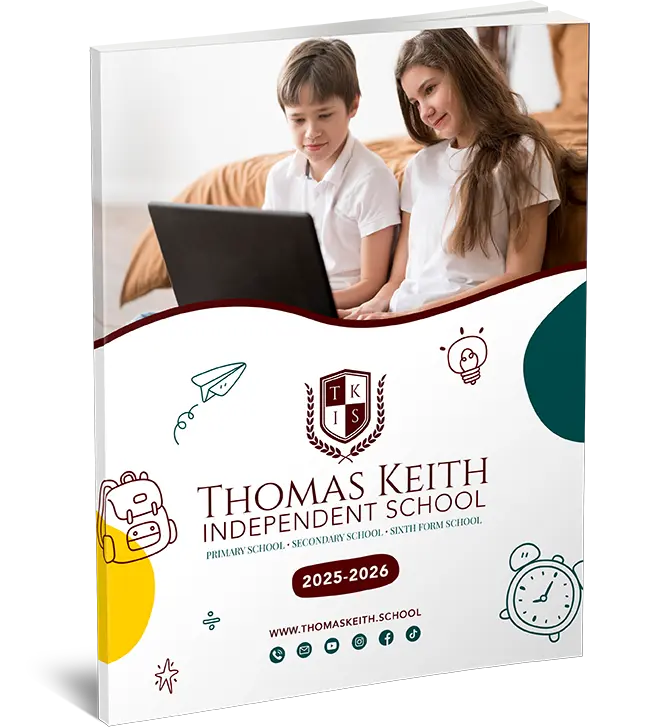
Instruction Writing KS1
A Comprehensive Guide to Instruction Writing KS1 Students
One of the most important skills that kids learn early in school is how to write directions. For pupils in Key Stage 1 (KS1), this entails knowing how to effectively explain and organize procedures in a way that is simple to follow. KS1 instruction writing that works emphasizes order, clarity, and simplicity so that young students can lead others through a task or process. With practical advice and examples, this article offers a thorough approach to writing directions in KS1, particularly for Year 2 students. We’ll also examine how Thomas Keith Online Independent School helps young students with their writing education.
Why Does KS1 Instruction Writing Matter?
Because it teaches youngsters to think logically and divide tasks into manageable steps, instruction writing is crucial. As kids progress in their education, this ability serves as the basis for increasingly intricate writing and communication styles. Children who write instructions gain confidence as well because they learn how to accurately communicate their ideas and knowledge.
Qualities of Effective KS1 Instruction
It’s important to emphasize a few essential elements when instructing second-graders on how to write directions. The guidelines ought to be:
Simple and Clear: Speak in terms that first-graders can comprehend.
Sequential: Actions ought to be taken in a sensible order.
Precise: Keep sentences brief and steer clear of superfluous words.
Command-based: Frequently expressed in the imperative form, such as “Place the seeds in the soil”
Supported by Illustrations: Each stage is made clearer by diagrams or images.
Example of KS1 Instructional Writing: Sandwich Making
Title: Sandwich-Making Instructions
List of Requirements: Bread, butter, plate, knife, and filling (such as cheese or jam).
Directions:
Lay down two pieces of bread on a platter.
Spread one side of each slice with butter using a knife.
Top one slice with the filling of your choice.
To create a sandwich, place the second piece on top.
Gently press down to cut the sandwich in half.
The language used in this example is straightforward, and each step makes sense.
How to Teach KS1 Instructional Writing
1. Begin with Activities You Know
Select assignments like hand washing and tooth brushing that the pupils are already familiar with. Students can concentrate on organizing their writing rather than picking up a new technique by beginning with exercises they are already familiar with.
2. Explain the Instructional Framework
Students should be taught the fundamentals of instruction structure.
Title: What is the purpose of the instructions?
List of Resources What are you going to require to finish the task?
Step-by-Step Instructions: The primary procedures, are arranged chronologically.
3. Employ Diagrams and Visual Aids
For KS1 pupils, visual aids are especially useful because they help them relate written instructions to what they should be doing. Teachers can create basic diagrams or use picture cards.
4. Stress the Value of Time Words
Using words like “first,” “next,” “then,” and “finally” makes it easier for pupils to follow the stages. Instruct pupils to use these words to organize the way their instructions flow.
![]()
Year 2 Writing Instructions: Complex Strategies for KS1
Students can start honing their more in-depth instruction writing abilities in Year 2. Other ideas that educators can present include:
Using Adjectives: Using words like “Spread a thin layer of butter” to describe something will help make directions more understandable.
Emphasizing Safety: Talking about how safety warnings, such as “Be careful with the knife,” are occasionally included in instructions.
Creating Checklists: Students can make sure they haven’t missed any stages in longer instructions by using checklists.
An Example of a Year 2 Activity: Sowing a Seed
Title: The Seed-Planting Process
Supplies: water, soil, seed, and a little pot
Directions:
First, add soil to the pot.
Next, use your finger to create a tiny hole in the ground.
After planting the seed, fill the hole with dirt.
Next, cover the soil with a small amount of water.
Lastly, water the pot every few days and place it in a sunny location.
Simple language, imperative verbs, and sequence words are all used in this example. It is set up such that second-year students can follow it with ease.

Teaching Instruction Writing at Thomas Keith Online Independent School: A Case Study
The UK-based platform Thomas Keith Online Independent School focuses on developing useful skills like instruction writing. To help KS1 children understand instruction writing, they employ role-playing, interactive exercises, and visual aids. Teachers at Thomas Keith, for example, walk pupils through routine chores (such as cleaning their workspace) and encourage them to create instructions for them. The method guarantees that students gain confidence in instruction writing by combining personalized assignments with supervised practice.
Some Advice for KS1 Instructional Writing
Make Use of Simple Words
Complex words might be difficult for young toddlers to understand. Avoid jargon and always use plain, uncomplicated language.
Practice in Real-World Situations
Students can be encouraged to write instructions for chores like packing a school bag or setting the table that they may perform at home.
Incorporate Review Sessions
Once the instructions are written, go over them with the students. Pose queries such as “Is anything missing?” or “Is every step logical?”
Promote peer review
Permit pupils to share their instructions with their peers. To make sure the procedures are understandable and rational, they can follow one another’s directions.
Conclusion
For KS1 children, instruction writing is an essential ability that fosters rational thought and clear communication. We give young students lifelong skills by teaching them how to organize and communicate their thoughts. A methodical, student-centered approach to instruction writing that prioritizes simplicity, clarity, and interactive learning is demonstrated by Thomas Keith Online Independent School.
FAQs
Q1. What does KS1 instruction writing mean?
A: In KS1, instruction writing teaches students how to write straightforward, unambiguous instructions for finishing activities, frequently in a step-by-step manner.
Q2. What are the primary characteristics of KS1 instruction writing?
A: Clear, straightforward, sequential, and sometimes written in the imperative form, good KS1 instructions make use of visual aids whenever feasible.
Q3. How can I assist my second-grader in becoming a better instruction writer?
A: Encourage them to write instructions in a clear order, review their work, practice with common activities, and use plain language.
Q4. What part does teaching instruction writing play at Thomas Keith Online Independent School?
A: Through real-world activities and coaching, Thomas Keith School provides KS1 children with immersive, hands-on learning approaches to help them develop good instruction-writing abilities.
Q5. What makes command words crucial when writing KS1 instructions?
A: Command words, also known as imperative verbs, ensure clarity in every stage of instructions by making them clear and simple for young children to follow.
![]()







